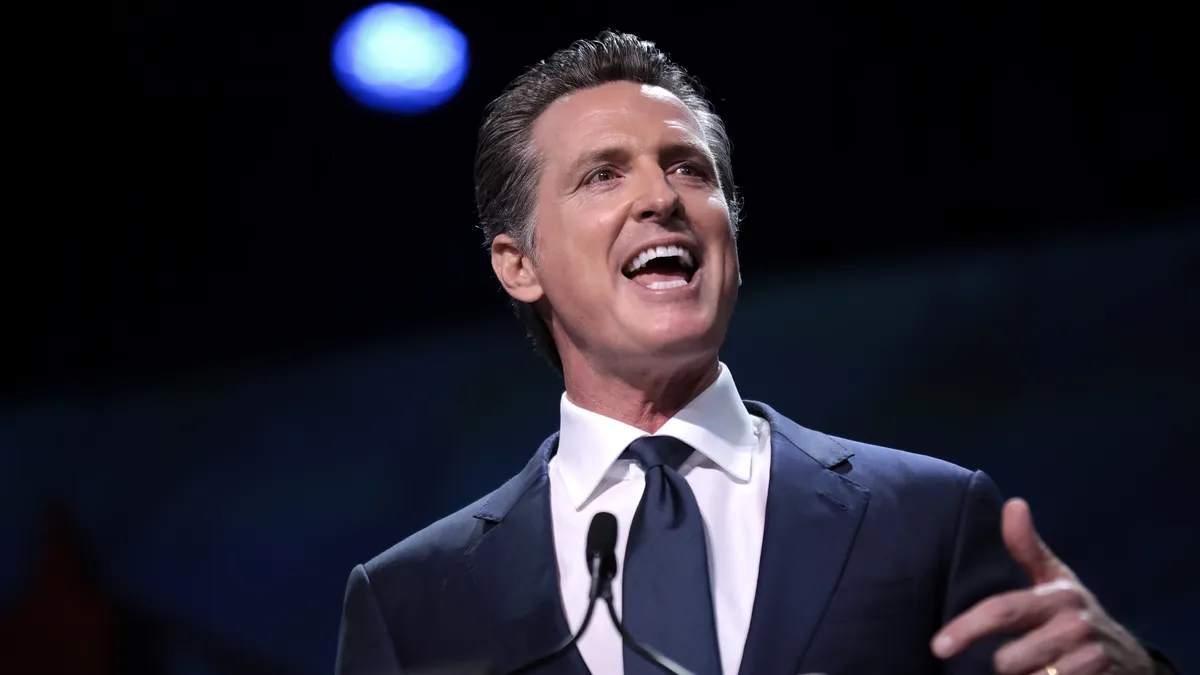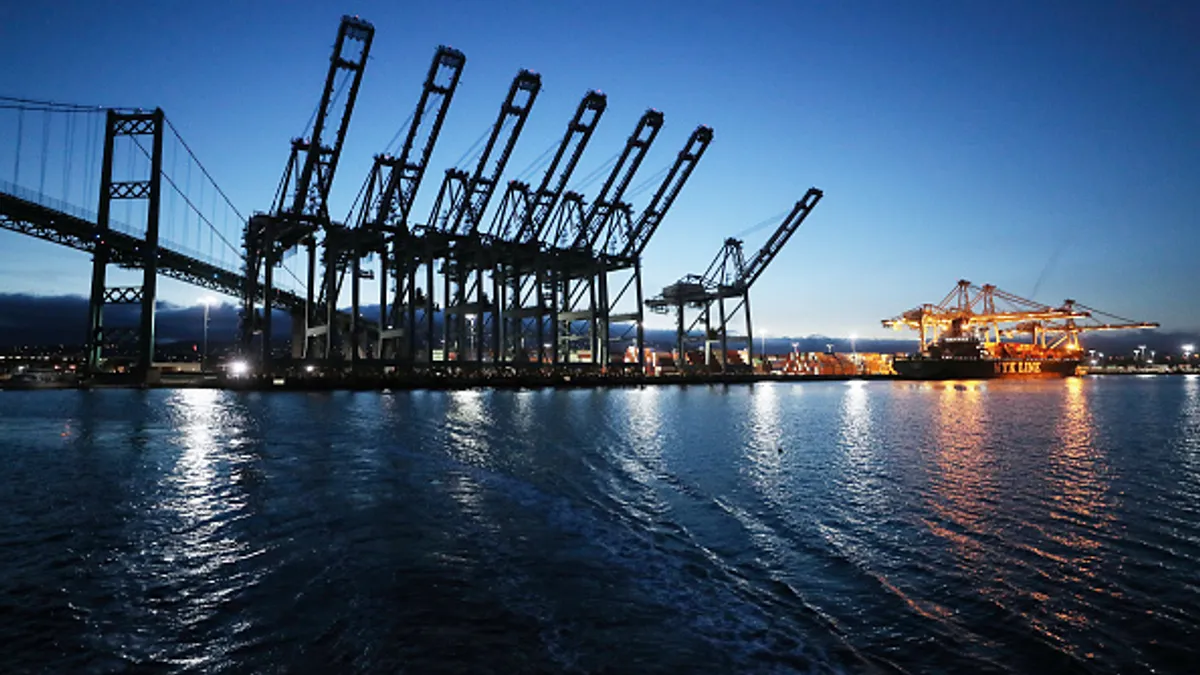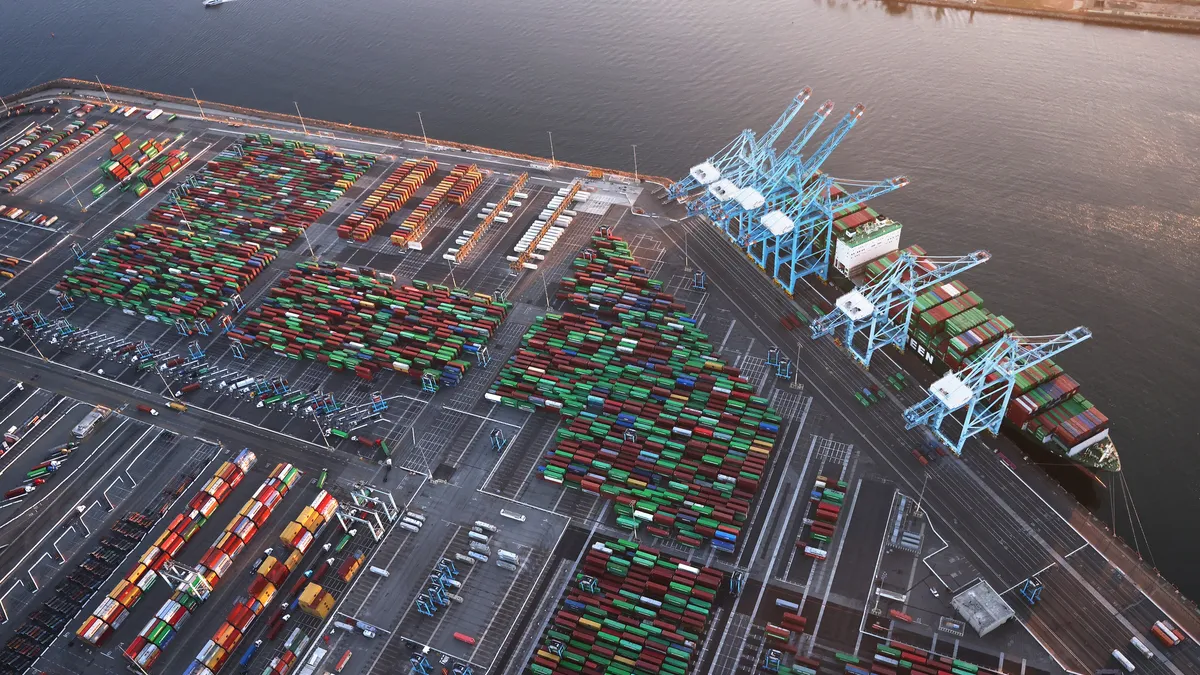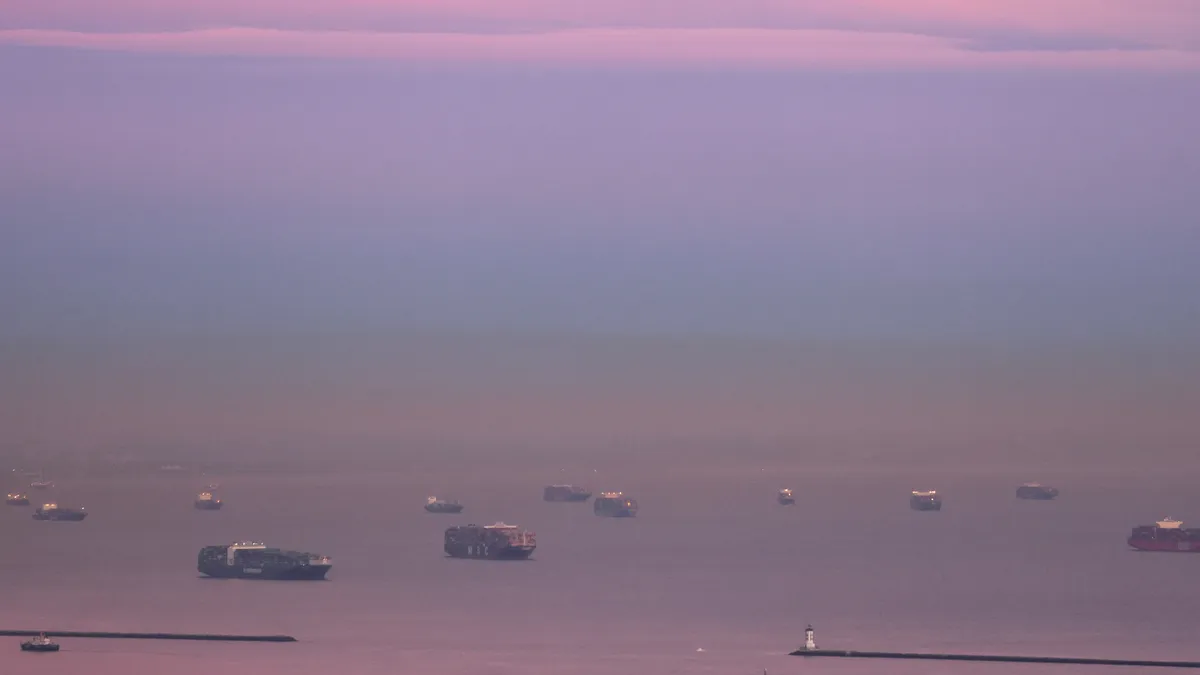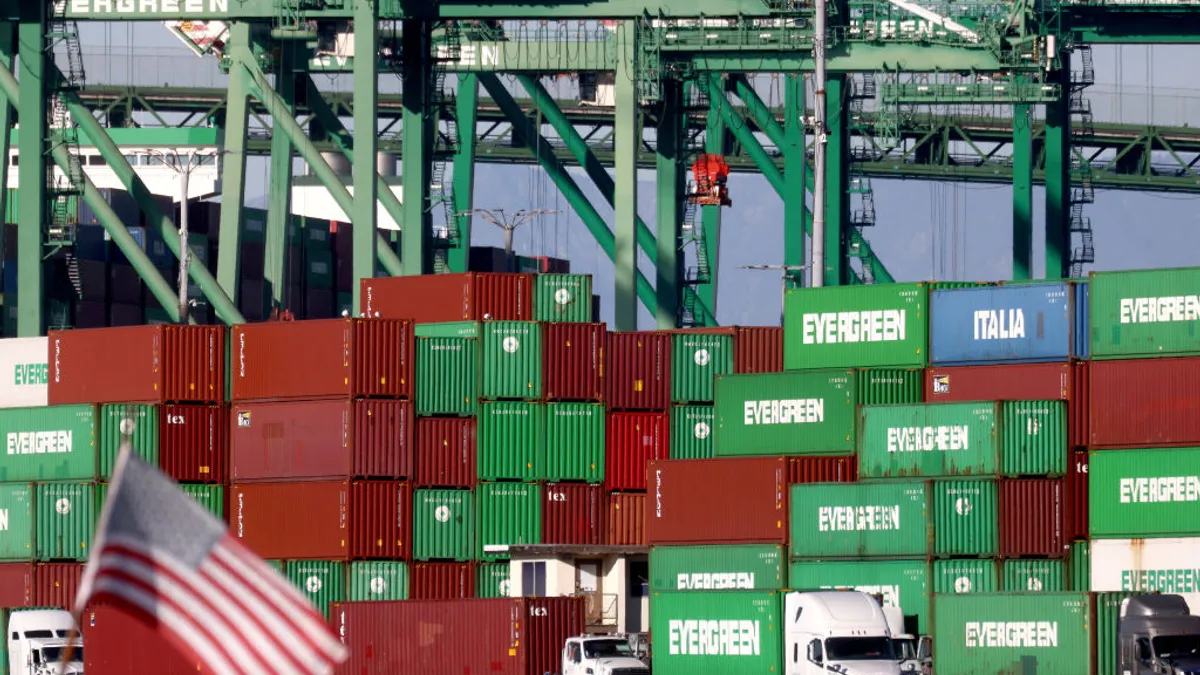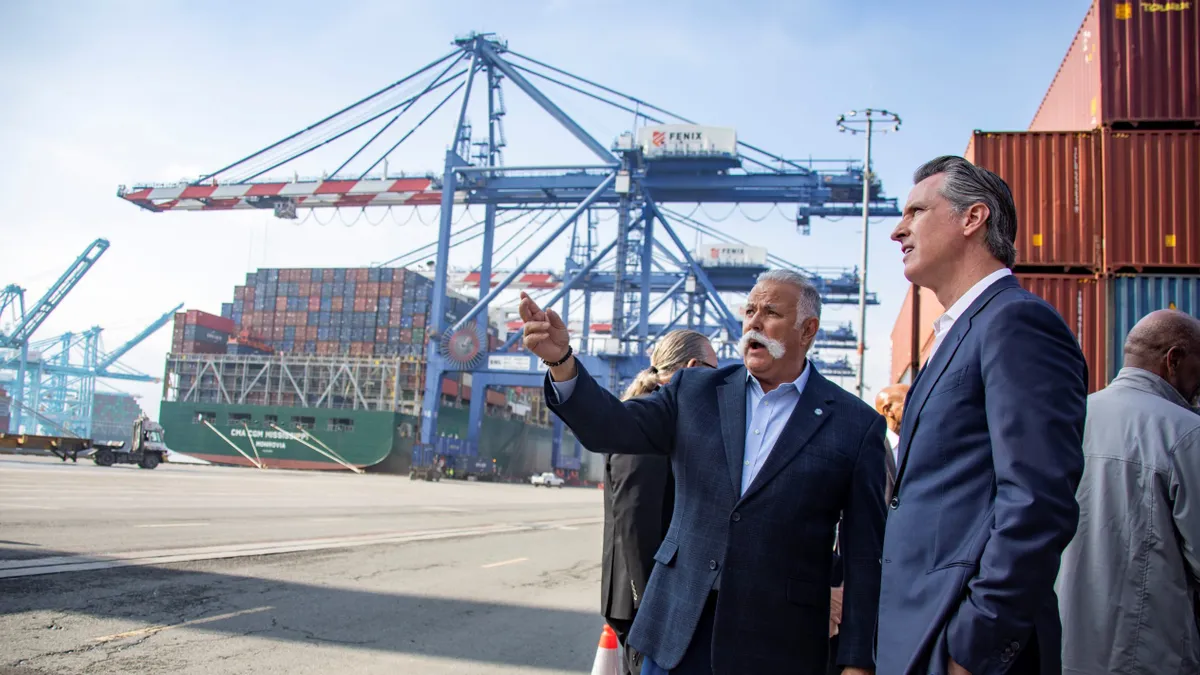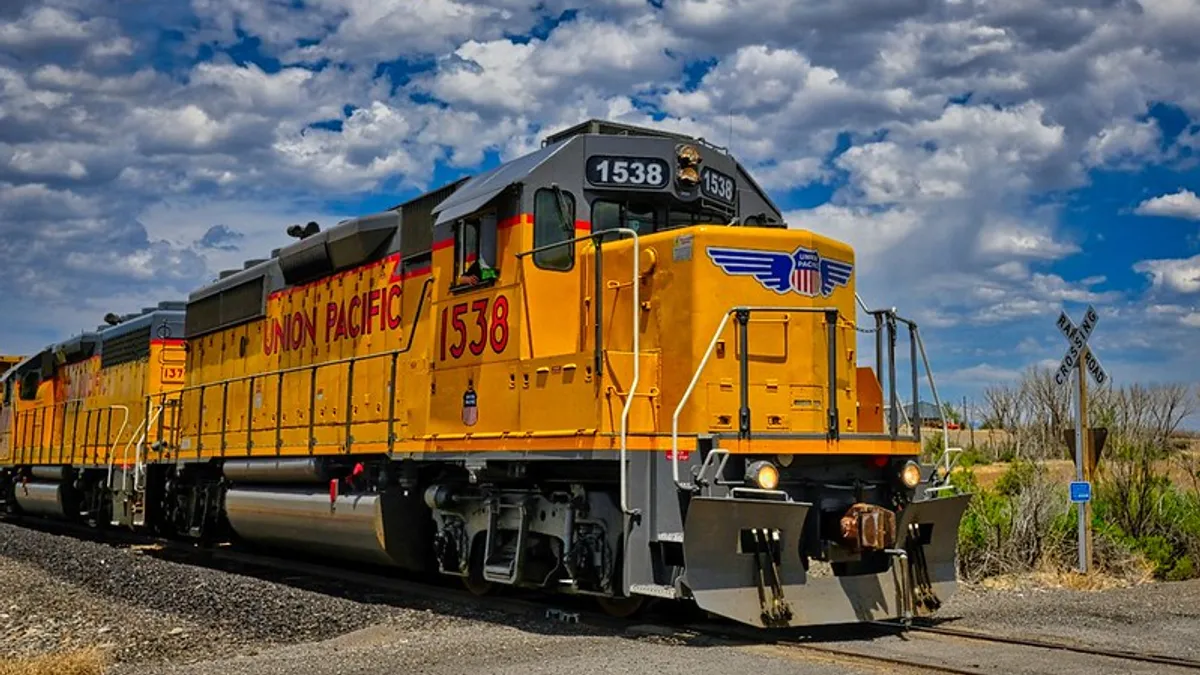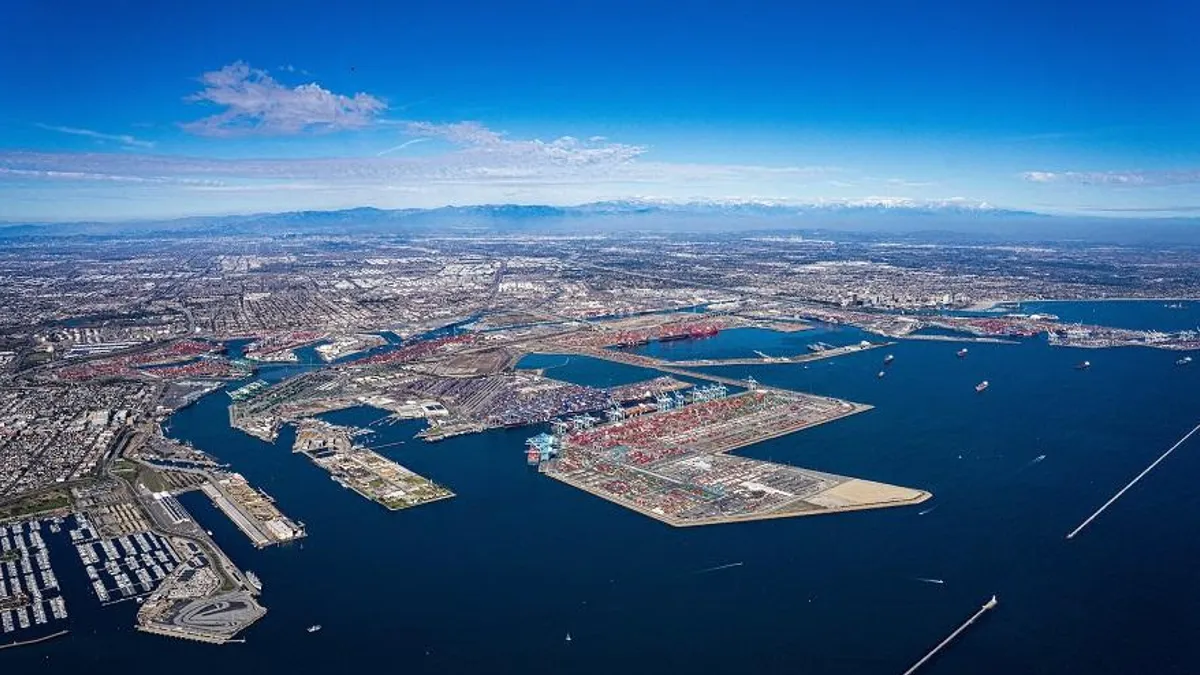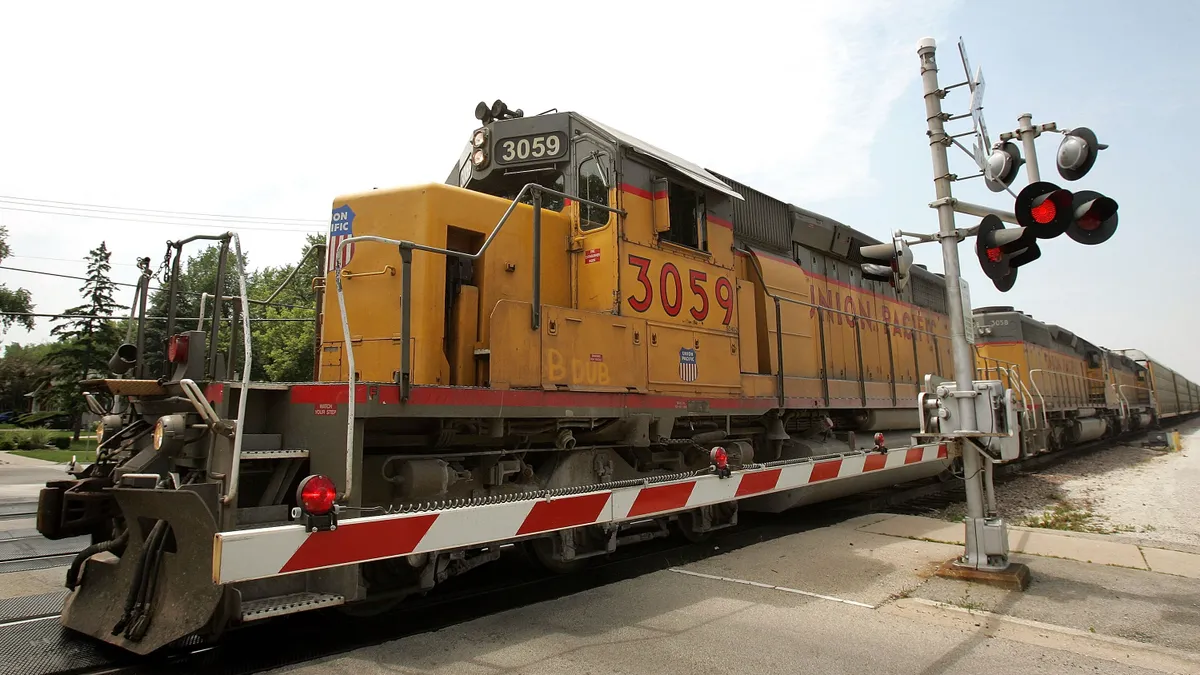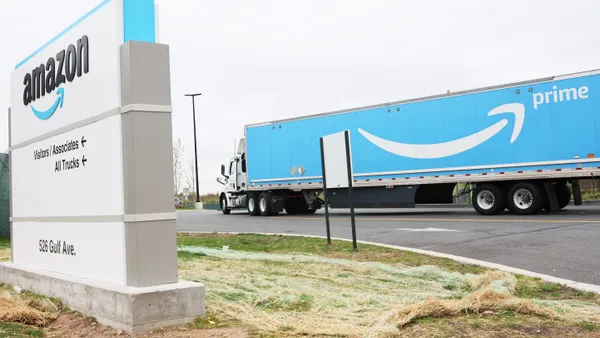Dive Brief:
- California Gov. Gavin Newsom is directing state agencies to work on both short-term and long-term ideas that could ease supply chain congestion, according to a nine-point executive order signed Wednesday.
- In the short-term, the executive order calls for state agencies to identify parcels of land that could be used to store some of the cargo containers backing up San Pedro Bay ports. It also gave agencies 30 days to identify "priority freight routes" to be considered for weight exemptions.
- In addition, the order put timelines in place for longer-term ideas such as asking agencies for a list of supply chain infrastructure needs that could be included in the state's 2022 budget, and convening an industry panel tasked with exploring the effects of port automation on labor by March 1, 2022.
Dive Insight:
Government officials are taking more steps to address the supply chain crisis and the backlog of containers that have piled up at Southern California ports.
A lack of space and equipment is limiting ports' ability to operate effectively. Space is so constrained that terminals are refusing to accept empty container returns. And with nowhere to return the empties taking up chassis capacity, Insider reported one trucking company was parking containers on residential streets in Los Angeles.
"Really the whole market is flooded with freight," said Justin Barnes, TOC Logistics International's ground domestic product owner. "That backlog just continues to build and build, so one container comes in, and then 10 more come on top of it, and it's hard to get that one moving."
Ports Envoy John Porcari had hinted the U.S. government was looking to lease or repurpose parcels of land for container storage during a media briefing last week, saying "inland pop up sites" on public or private land can provide "temporary help while the longer-term capacity issues are addressed."
Newsom's order asks agencies to "identify" potential sites for short-term storage needs, giving the Department of General Services until Dec. 15, 2021 to complete its review of state-owned land. It also asked other agencies to work with the Department of General Services to expedite the leasing of this land for cargo storage purposes.
The governor didn't provide a timeline for identifying potential inland sites on land that is privately, locally or federally owned, which are subject to different rules.
In a statement, the California Trucking Association said it commended the focus on "freeing up state land to store empty containers" and encouraged "equipment providers and local governments to work with the governor to get empty containers off of chassis."
Shippers that rely on trucking have been particularly affected by the congestion at ports. Space constraints at the ports have meant truckers take longer to pick up goods, return empty containers, and find chassis for their cargo. The dynamics have exacerbated the transportation capacity crunch, leading to elevated spot rates.
Spot rates across the nation have been on the upswing since last May and are hovering around $2.87 per mile. But on congested lanes from Los Angeles to Phoenix, rates are as high as $4.50 per mile, DAT reported.
Newsom's order directs agencies to identify priority freight routes and consider weight exemptions on those lanes. The directive comes as each truck is hauling more freight to keep up with shipper demand, according to Bob Costello, chief economist at the American Trucking Associations.
A full list of Newsom's 9-point executive order to ease supply chain congestion
| Point | Description |
|---|---|
| 1 | Orders the Department of Transportation and California State Transportation Agency to evaluate and identify priority freight routes that should be considered for temporary exemptions to gross vehicle weight limits. |
| 2 | Orders the Governor's Office of Business and Economic Development to identify non-state sites, "including private, locally owned, and federally owned parcels, that could be available to address short-term storage needs." |
| 3 | Orders the Department of General Services to complete its review of state-owned property near impacted ports no later than Dec. 15, 2021. Orders other agencies to help meet this deadline. |
| 4 | Orders the Department of General Services to work with other state agencies to expedite leasing once the review is complete. |
| 5 | Orders the California Labor and Workforce Development Agency to identify "high road training partnerships" to increase education and development opportunities for workers in the supply chain. |
| 6 | Orders the California Labor and Workforce Development Agency to announce an industry panel required by AB 639 by Dec. 31, 2021, and convene it for the first time no later than March 1, 2022. |
| 7 | Orders the Department of Finance to work with other agencies on longer-term proposals that could be included in the governor's January 10, 2022 budget. Cites "port and transportation infrastructure improvements, electrification of the goods movement system from port to delivery, workforce development, and other actions to support goods movement," as proposals to explore. |
| 8 | Orders various agencies to "use all existing legal and financial authority to expedite and prioritize these activities, including by giving them preference in the award of state funding." |
| 9 | Orders various agencies to "continue to execute actions in coordination with the Biden-Harris Administration Supply Chain Disruptions Task Force." |
SOURCE: Executive Order N-19-21
Shefali Kapadia contributed to this story.



